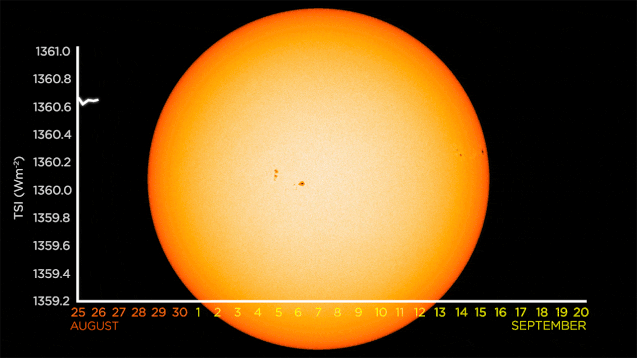 |
| Together Lyn and Doug Scouller were able to get the solar farm up and running. (ABC News: Harriet Tatham) |
"We suffer from an unusual amount of blackouts out here. Sometimes I've experienced it in Karumba up to 13 times a day ... and it's purely because of the losses," Mr Scouller said."The power actually comes from Rockhampton up the coast to Townsville and up to us, and it's the old story the longer the extension lead, the less power you get at the end."
The five-megawatt, 16,000-panel farm produces electricity that is fed back into the grid at Normanton.
By producing power locally, Mr Scouller said he believed he would save on the losses, and subsequently put a downward pressure on electricity prices.
"I just believe we've got a lot of losses in the network and if we start to produce power where the power is used, we will reduce those networks and it will ease the pressure on increasing power prices," he said.
 |
| Doug Scouller previously owned and operated a motel. (ABC News: Harriet Tatham) |
In 2016, the Normanton Solar Farm received an $8.5 million grant from The Australian Renewable Energy Agency (AREA), and is now being used as a test case to generate data about fringe-of-grid energy investment.
Calculations made before the plants construction will be compared with new data to determine whether the Scouller's planned reduction in transmission loss will eventuate.
But not everybody is convinced.
 |
| The 16,000 panels on the farm can power an area almost twice the size of Tasmania. (Supplied: Normanton Solar Farm) |
"The requirement of very long transmission lines means that there are a lot of losses in just having the line turned on," Mr Elkins said.
"Putting energy at the remote end can actually cause that amount of [required] power flow to have the line online ... to increase.
"It's kind of like a freight train - the amount of energy required to take the freight train from Townsville to Normanton is travelling every minute, and whether the power is supplied in Normanton or Townsville, that freight train still needs to run every time."While there are plans for expansion, the Normanton Solar Farm does not yet have a battery system. Another reason why Mr Elkins said he believed changes in transmission loss would be limited.
"Most of the generation from the solar farm is during the day where consumers typically use it during the night, so the excess solar generation has to flow back to Townsville — that's one of the reasons why the losses will be minimal," he said.
Mr Elkins said the only way to remove the losses entirely would be to turn off the Townsville to Normanton line, which he said might cause more problems.
"The only way to remove those losses would be to turn that line off which would then produce more unreliable power," he said.
 |
| Despite the Scouller's research, Mr Elkins says power generation at the end of the line "may not have an impact on losses". (ABC News: Harriet Tatham) |
"[I'm] extremely confident — we did a lot of pre-planning, a lot of calculations, a lot of engineers — no doubt at all," Mrs Scouller said.
Mr Scouller agreed.
"It's just pure mathematics and physics — if you generate out of here, you reduce those losses almost to zero," Mr Scouller said.
An electric 'I do'
The project bought no shortage of challenges.
In February, a stand-off with Ergon Energy delayed the switch-on of the farm, and about the same time Mr Scouller was diagnosed with cancer.
But at the weekend the couple hosted the ultimate celebration, and were married on the same day the farm was fully commissioned.
"We had family travelling from all over, so we wanted to celebrate with a bang," Mr Scouller laughed.
And the newlyweds said Normanton would not be their last solar farm.
"I think it's a bit like a marathon runner — you forget how hard you were hurting halfway through the race. Once you're finished, you want to have another go," Mr Scouller said.
 |
| Lyn and Doug Scouller were married on the same day their solar farm was commissioned to 100 per cent. (Supplied: Lindy Hick Photography) |
Links
- Dispute with electricity network provider delays Normanton solar farm
- Normanton solar farm stalemate delays green energy project
- Gulf solar farm plan secures $8.5m
- How to slash your power prices — by using your hot water system as a battery
- How battery storage could solve our energy problems
- Solar batteries eclipse power poles in off-grid bush community
- Family-style vehicle to compete in Solar Challenge
- Millions of renters, unit owners locked out of solar savings
- Households urged to make money while the sun shines
- Why hasn't Darwin embraced solar power?
- Rural businesses look to alternative power as prices rise
- Lightweight 'printed solar' securing energy future
- Regional home and business owners drive solar boom
- Renewables getting cheaper all the time — here's why
- Solar batteries 'exploding' in popularity with uptake tipped to triple: audit
- Solar cells: How they work and the future of sunshine
- Bill shock looms as lucrative solar tariffs roll back, advocates warn
- Explained: Why feed-in tariffs began so high and have fallen so low
- Off-grid community transformed after swapping diesel for solar
- The Tesla Powerwall and what it means for Australia's energy market
- How solar energy farming could change the way we buy power
- Recharging home devices from mouldy bread could be the future
- Solar Impulse 2 arrives at home of Wright brothers



